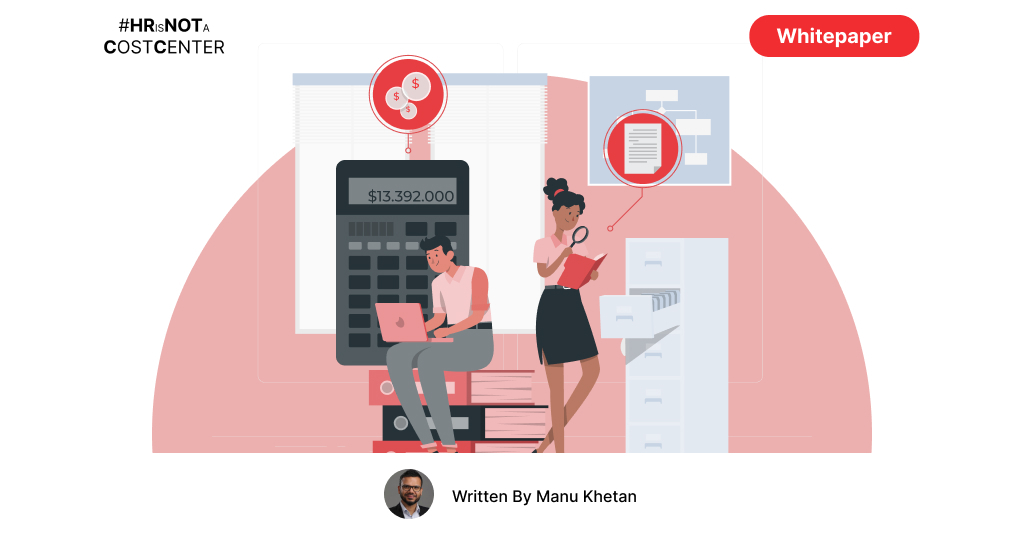
Whitepaper
Technology Trend of Expense Management Software


RESOURCES > MANU’s BLOG > Technology Trend of Expense Management Software
Companies are increasingly implementing expense management software. However, spreadsheets continue to dominate at this time. Before we can figure out why this is the case in the age of automation, we need to look at how managing expenses have changed over time.
The Evolving Problem of Expense Management
Managing expenses is not a new issue. It has existed for as long as businesses have existed. The only difference is how companies handle their spending. If you ask any business professional to describe their experience with expenditure management, you will likely hear terms like “annoying,” “time-consuming”, or even “dull.”
And rightfully so. This is simply the way the process works. But when paper-based bookkeeping was the norm, putting procedures on a computer was a significant change for businesses.
The digital revolution
The adoption and proliferation of digital computers and digital record-keeping began in the latter half of the 20th century and continues today. In the beginning, files could only be stored locally. It was not until around 1969 that computer networking technology was introduced when ARPANET (Advanced Research Projects Agency Network) became the first connected computer network. It implemented the TCP/IP protocol suite, which later became the Internet.
Since then, computers have become the primary source to track records. The ability to create new entries with strokes of the keyboard made it easy, and the much more secure manner of record keeping (vis-a-vis paper) became enticing. That has since morphed into different platforms of record keeping – from tablets to mobile phones, and the data gets recorded from a local hard drive to the cloud.
But at the core of it, the entry of records remains stagnant. And with the exponential growth of data volume, that becomes tricky as more entries equate to a higher likelihood of human error. Factoring in the impatience of the modern day user with expectations of consumer-grade usability, what can be done to improve the workflow and create a situation where usage, compliance and speed can intersect?
From Process Management to Process Automation
This change from managing applications to automating processes, also called process automation, is a vital part of figuring out the future of processes. When it comes to managing expenses, employees should not worry about how money is handled and recorded. An employee is not concerned with the process of spending; he is concerned with the results of his spending. Experience suffers when users have to sit down with piles of receipts. Compliance degrades.
Similarly, finance and accounting oversee all firm spending. Even though business expenses are not an essential part of their job, they spend a lot of time checking and processing charges started by employees. This is a typical workflow problem where the process depends on the end-user and the field they work in.
Staff to complete required tasks
Approvers and Finance must rely on staff to follow the company’s T&E policy and turn in reports on time.
Quality check is mandatory
Accounting and Finance must manually verify every receipt, expense, and report for the company.
Verification via communication channels
After that, the staff and finance teams will have to check each other’s emails or Slack messages to find out what’s going on.
This procedure, as is evident, is strongly reliant on the discipline of all stakeholders involved. Automation-driven processes are what we aspire to see in the future. Something that builds trust by making the whole process automatic and getting everyone involved.
Streamlining and simplifying processes that cause frustration and boredom, like managing expenses, will improve efficiency, productivity, and, most importantly, employee happiness.
From Record-Keeping Systems to Trust-Building Systems
Processes like managing expenses create a lot of data that need to follow given financial rules and generate a lot of information for compliance insights. But unfortunately, these insights are rarely used because the amount of time and effort required to get them is tremendous.
If only a computer that uses rules and AI to comb through and make sense of data could provide these insights, they could make data-driven decisions more quickly. We need to switch from systems that keep records to systems that build trust over time.
Trust is earned in micro-events or when people begin to trust the system for various things they accomplish. Acting on the system’s insights and data will eventually help people move away from managing everything themselves.In Gartner’s top strategic technology trends for 2021, the top predictions were that all applications would be people-centric, which means products will be built around solving a problem for a person in the way they want. Users would no longer need to go to a given location or use a specific gadget or application to do certain tasks. Instead, they should be able to do it from any device or application and at any time.
Types of Expense Management Platforms
There are many expense management solutions on the market right now. The main difference between them is the size of the companies that use them, which affects the need for extra compliance, approval workflows, etc. It falls across three categories: Small and Medium-Sized Businesses, Small and Medium-Sized Enterprises and Large Enterprises.
According to Business Consultancy Sales Results:
Small Enterprise:
Small and Medium-Sized Businesses also known as SMBs have less than 100 employees and between $5-$10 million in annual revenue.
Medium Enterprise:
Medium Enterprises also known as “mid-market”. Medium Enterprises have between 101 and 500 employees and make between $10 million and $1 billion per year.
Large Enterprise:
Are defined as having over 1,000 employees and over $1 billion in annual revenue.
Small/Medium Enterprise
Under this category, there are two types of standard solutions that companies turn to. The first is a corporate card-focused solution. Like a personal credit card, the ownership would instead fall to the business. And given that the corporate card is meant for business, many perks and rewards are relevant to the companies instead of generic lifestyle-related ones.
Examples of Corporate Card Solutions

The second option that these companies can consider would be platform-based solutions. They are not card-focused and do not usually provide card options. The platform, however, offers integration with any credit card. This allows companies and users to use any card (business or personal) but still makes it straightforward enough for users to raise claims or reimbursements for business-related expenses.
Examples of Platform-Based Solutions

Enterprise
Enterprise solution providers offer features that are more suited to large enterprise companies. These features are not available from SMB/SME solution providers. This can be done in many ways, such as confining complex user-defined forms, expense rules, extensive role based permissions requirements for large distributed teams, multiple levels of approval, native integrations with global ERP software providers like SAP and so on.
Examples of Enterprise Expense Management Platforms

Synonymous to travel expense on the SAP SuccessFactor platform, SAP Concur mobile app guides employees through business trips, charges are directly populated into expense reports, and invoice approvals are automated. Concur was acquired by SAP and remains the most expensive option for large enterprises.

Emburse is a global provider of expense reporting and invoice management solutions and provides a comprehensive suite of Expense Management solutions to companies of all sizes.
Purpose-built for enterprises to cater to complex workflows approvals, extensive claims forms and roles customizations and a modern mobile first user experience to process claims while ensuring the necessary compliance is accurately captured. It also comes with native integration to SAP SuccessFactors, making it an attractive alternative to Concur.
The Future Trends of Expense Management
Businesses can no longer rely on manual and antiquated expenditure management solutions. Moving forward, firms can benefit from automated systems for tracking and reimbursing expenditures, cloud technology to keep receipts, and AI to detect fraud in expense reports. Here, we look deeper into those promising technologies to see how much of an impact they can have on organisations’ bottom lines.
1. Increasing ROI Using an Automated Expense Management System
The second most difficult operating expense is business travel. Therefore, investing in expenditure management software is beneficial, particularly if your staff travel frequently. In addition, an expense management system lets you see your expenses in real time. This allows your company to make better decisions, come up with policies, and save money.
2. Make Your Spending Management Method More Digital
Forrester Consulting researched the digital transformation of travel and expense management. Many businesses want to change to digital transformation, according to the results of 550 polls. Respondents to the survey said that many companies still use old tools, making work harder for employees, managers, and the finance team. Participants believed that digitising expense management systems may enhance user experience, boost efficiency, and provide insights for improved planning and cost control.
3. Creating a Mobile-Friendly Expenditure Management System
Organisations need to use technology that makes it easy for business travellers to produce reports and ask for money back using computers and mobile phones. Employees may track their costs from anywhere globally, thanks to mobile accessibility. Employees can scan and submit receipts and record various expenses using the mobile app. Managers and the finance team can also use the app to quickly accept or reject spending reports.
4. A Solution for Integrated Expense Management
You can stay on top of your business spending, enhance employee productivity, and reduce your organisation’s T&E spending by integrating your expense management system with enterprise resource planning (ERP), human resource management, or accounting software.
5. A Greater Reliance on Real-Time Data
Working capital management will continue to be crucial for many firms in 2022, so the capacity to better estimate incoming spending will be essential. Giving finance teams the information they need about how much the company spends could significantly affect how decisions are made and how the business grows.
Top cost management software’s reporting and analytics features provide real-time insight into company spending. It allows you to track expenses by employee, project, and category. Organisations will use analytics to detect inefficient spending trends and make better-informed decisions.
6. A Fraud Detection System Based on Artificial Intelligence
Detecting cost fraud and flagging claims that may violate T & E policy has traditionally been a time-consuming and labour-intensive operation. Currently, audits and reviews have detected just about 12% of fraudulent incidents. Using AI to manage expense fraud could be game-changing. This cuts down on work, but it also makes things more accurate and can predict dangers based on how they have happened in the past.
Also, AI can look at cost records in real time, which lets reimbursements be looked at right away if there are any red flags. AI is expected to become an essential part of managing expenses, making this industry much faster and more accurate.
7. Increasing The Effectiveness of Your Expense Management
Although cost management methods and technology are improving significantly, many businesses still do not have automated T & E processes. However, it doesn’t have to be hard to ensure that your spending management is working well if you use the right tools.




Share with your network
Get updates in your inbox